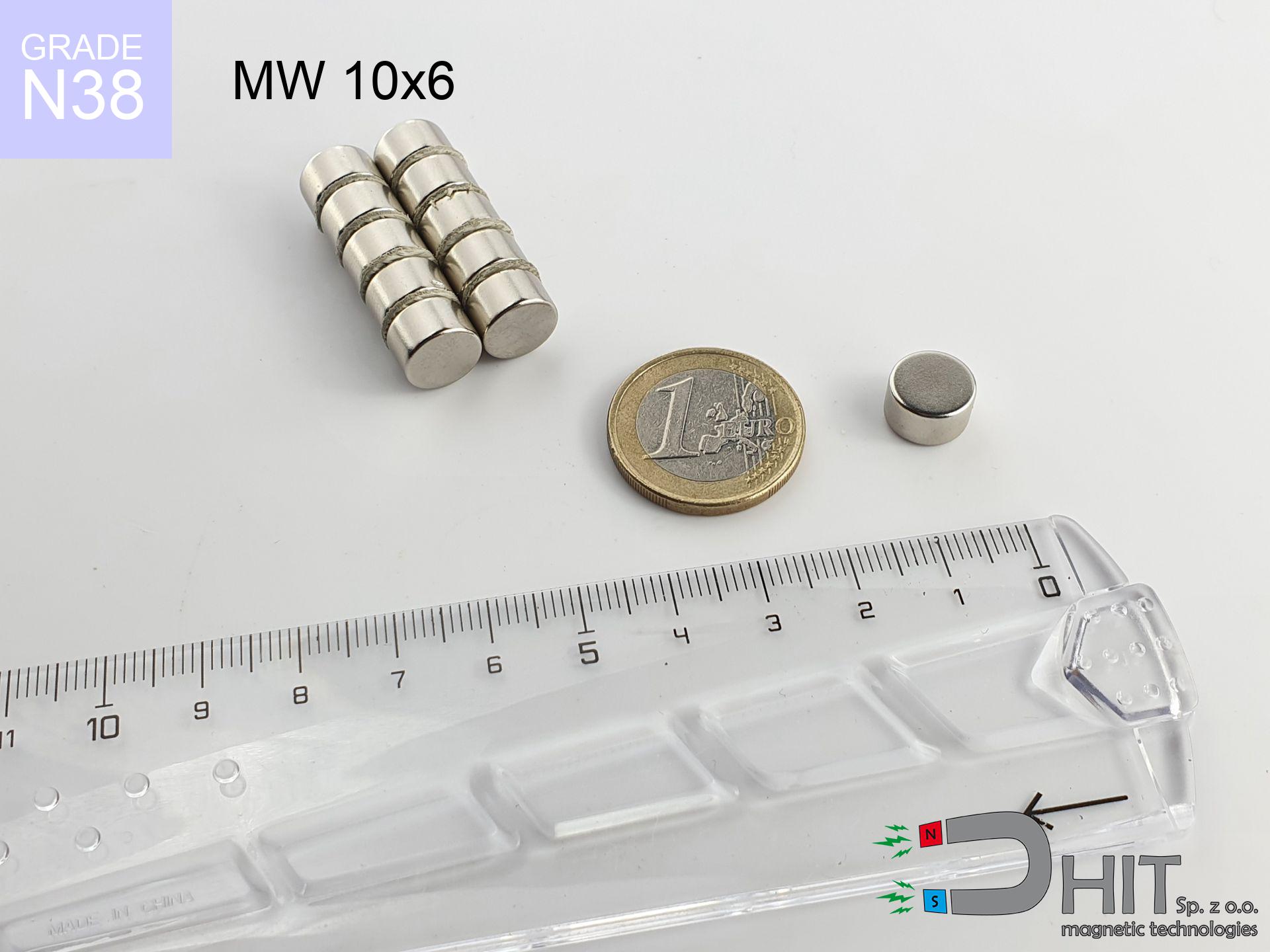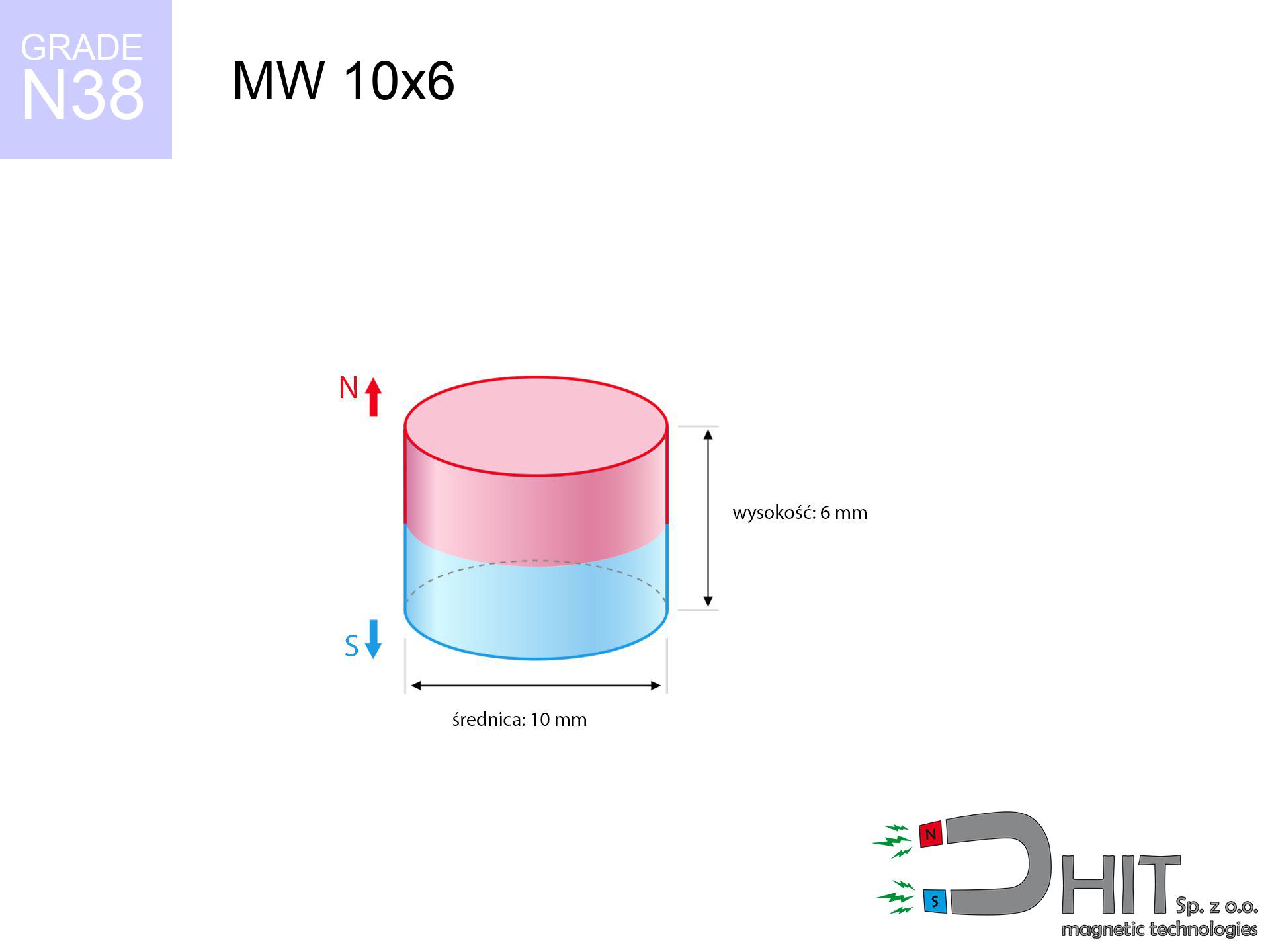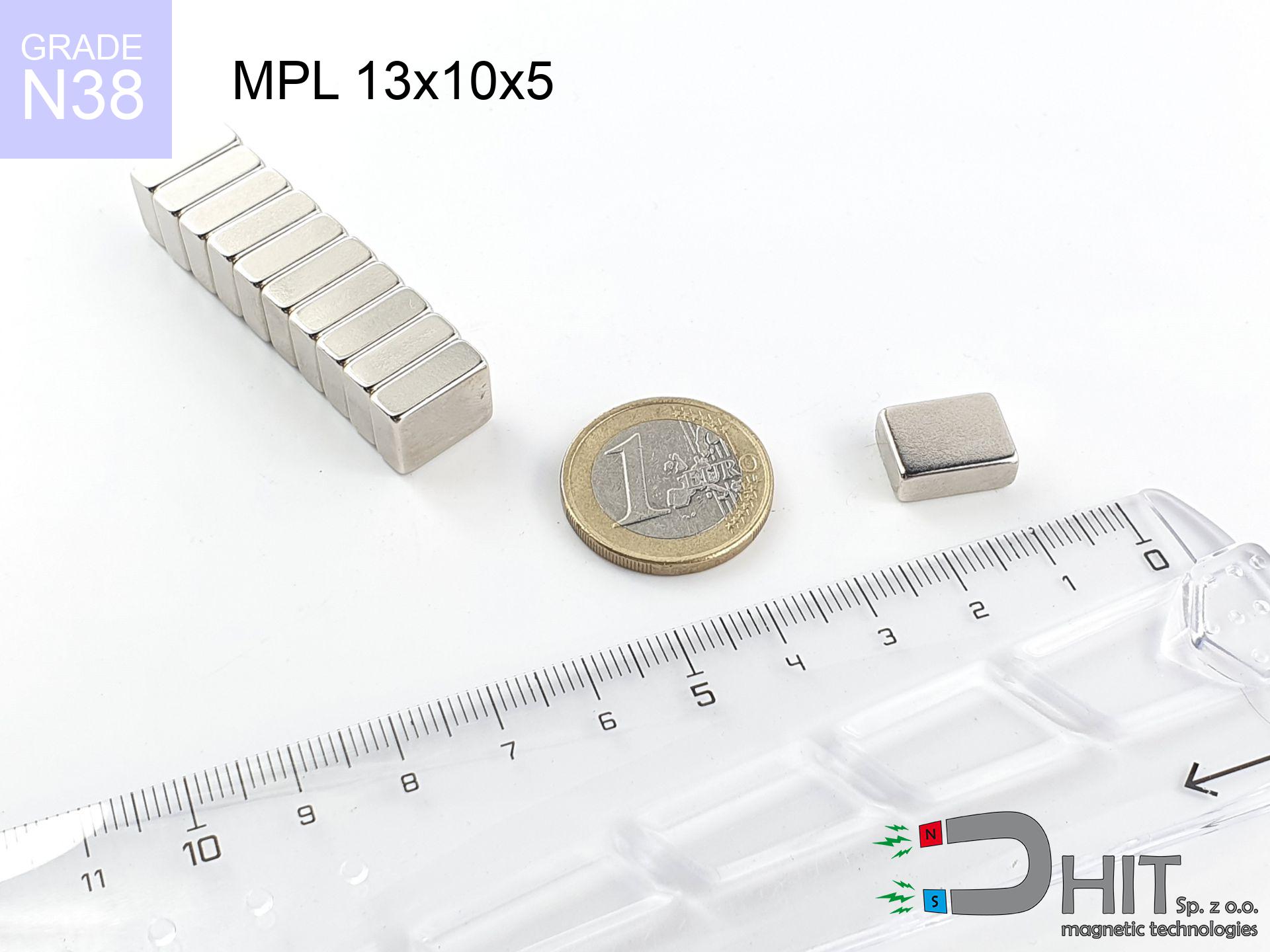MW 10x6 / N38 - cylindrical magnet
cylindrical magnet
Catalog no 010012
GTIN: 5906301810117
Diameter Ø [±0,1 mm]
10 mm
Height [±0,1 mm]
6 mm
Weight
3.53 g
Magnetization Direction
↑ axial
Load capacity
3.32 kg / 32.56 N
Magnetic Induction
475.73 mT
Coating
[NiCuNi] nickel
1.92 ZŁ with VAT / pcs + price for transport
1.56 ZŁ net + 23% VAT / pcs
bulk discounts:
Need more?Want to negotiate the price?
Call us +48 22 499 98 98 or write via form on the contact page. Test the magnet's power with our power calculator.
Orders placed by 14:00 are shipped the same day.
MW 10x6 / N38 - cylindrical magnet
Magnetic properties of material N38
Physical properties of NdFeB
Shopping tips
Moreover, although neodymium is a component of the strongest magnets, they are prone to corrosion in humid environments. Therefore, they are coated with a coating of nickel to increase their durability. Interestingly that NdFeB neodymium magnets are about 13% lighter than SmCo magnets and, despite their power, are brittle, which requires special caution during their handling. For this reason, any mechanical processing should be done before they are magnetized.
In terms of safety, there are several recommendations regarding the use of these magnets. They should not be used in acidic, basic, organic environments or where solvents are present, and also in water or oil. Furthermore, they can damage data on magnetic cards and hard drives, although data deletion using a neodymium magnet is not guaranteed.
In terms of properties in different environments, neodymium magnets are sensitive to corrosion, especially in humid conditions. Therefore, they are often covered with coatings, such as epoxy, to shield them from environmental factors and prolong their durability. Temperatures exceeding 130°C can result in a deterioration of their magnetic properties, although there are particular types of neodymium magnets that can tolerate temperatures up to 230°C.
As for dangers, it is important to avoid using neodymium magnets in acidic environments, basic environments, organic or solvent environments, unless they are adequately insulated. Additionally, their use is not recommended in water, oil, or in an atmosphere containing hydrogen, as they may lose their magnetic properties.
Advantages and disadvantages of neodymium magnets NdFeB.
In addition to their long-term stability, neodymium magnets provide the following advantages:
- They have unchanged lifting capacity, and over around 10 years their attraction force decreases symbolically – ~1% (in testing),
- Their ability to resist magnetic interference from external fields is impressive,
- Because of the reflective layer of silver, the component looks high-end,
- They exhibit superior levels of magnetic induction near the outer area of the magnet,
- They are suitable for high-temperature applications, operating effectively at 230°C+ due to advanced heat resistance and form-specific properties,
- Thanks to the possibility in shaping and the capability to adapt to unique requirements, neodymium magnets can be created in diverse shapes and sizes, which expands their application range,
- Important function in cutting-edge sectors – they serve a purpose in computer drives, electric drives, healthcare devices along with sophisticated instruments,
- Relatively small size with high magnetic force – neodymium magnets offer impressive pulling strength in compact dimensions, which allows for use in compact constructions
Disadvantages of neodymium magnets:
- They can break when subjected to a powerful impact. If the magnets are exposed to shocks, it is suggested to place them in a protective case. The steel housing, in the form of a holder, protects the magnet from damage and enhances its overall resistance,
- Magnets lose field strength when exposed to temperatures exceeding 80°C. In most cases, this leads to irreversible field weakening (influenced by the magnet’s form). To address this, we provide [AH] models with superior thermal resistance, able to operate even at 230°C or more,
- They rust in a moist environment – during outdoor use, we recommend using sealed magnets, such as those made of plastic,
- Using a cover – such as a magnetic holder – is advised due to the difficulty in manufacturing holes directly in the magnet,
- Safety concern from tiny pieces may arise, when consumed by mistake, which is notable in the protection of children. Moreover, small elements from these magnets can hinder health screening when ingested,
- Higher purchase price is one of the drawbacks compared to ceramic magnets, especially in budget-sensitive applications
Caution with Neodymium Magnets
Keep neodymium magnets away from TV, wallet, and computer HDD.
The strong magnetic field generated by neodymium magnets can destroy magnetic media such as floppy disks, video tapes, HDDs, credit cards, magnetic ID cards, cassette tapes, etc. devices. They can also damage devices like video players, televisions, CRT computer monitors. Remember not to place neodymium magnets close to these electronic devices.
Neodymium magnets can attract to each other, pinch the skin, and cause significant swellings.
Neodymium magnets jump and also clash mutually within a distance of several to around 10 cm from each other.
Keep neodymium magnets away from GPS and smartphones.
Intense magnetic fields generated by neodymium magnets interfere with compasses and magnetometers used in navigation, as well as internal compasses of smartphones and GPS devices.
Neodymium magnets should not be in the vicinity children.
Not all neodymium magnets are toys, so do not let children play with them. In such a situation, surgery is necessary to remove them. In the worst case scenario, it can result in death.
The magnet is coated with nickel. Therefore, exercise caution if you have an allergy.
Studies clearly indicate a small percentage of people who suffer from metal allergies such as nickel. An allergic reaction often manifests as skin redness and rash. If you have a nickel allergy, try wearing gloves or avoid direct contact with nickel-plated neodymium magnets.
Dust and powder from neodymium magnets are flammable.
Do not attempt to drill into neodymium magnets. Mechanical processing is also not recommended. Once crushed into fine powder or dust, this material becomes highly flammable.
Neodymium magnets can become demagnetized at high temperatures.
Although magnets have shown to retain their effectiveness up to 80°C or 175°F, this temperature may vary depending on the type of material, shape, and intended use of the magnet.
Neodymium magnetic are extremely delicate, they easily crack as well as can crumble.
Neodymium magnetic are extremely delicate, and by joining them in an uncontrolled manner, they will crumble. Magnets made of neodymium are made of metal and coated with a shiny nickel, but they are not as durable as steel. In the event of a collision between two magnets, there may be a scattering of fragments in different directions. Protecting your eyes is crucial in such a situation.
Neodymium magnets are not recommended for people with pacemakers.
Neodymium magnets generate strong magnetic fields. As a result, they interfere with the operation of a pacemaker. This is because many of these devices are equipped with a function that deactivates the device in a magnetic field.
Neodymium magnets are over 10 times more powerful than ferrite magnets (the ones in speakers), and their power can surprise you.
Please review the information on how to handle neodymium magnets and avoid significant harm to your body, as well as prevent unintentional disruption to the magnets.
Caution!
So that know how powerful neodymium magnets are and why they are so dangerous, see the article - Dangerous strong neodymium magnets.





![SM 32x225 [2xM8] / N52 - magnetic separator SM 32x225 [2xM8] / N52 - magnetic separator](https://cdn3.dhit.pl/graphics/products/sm-32x225-2xm8-zix.jpg)



